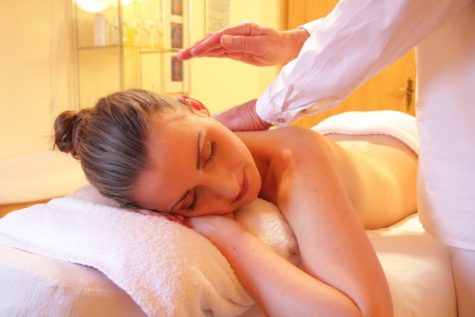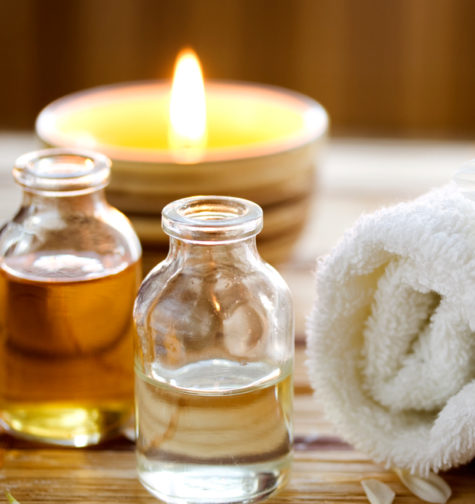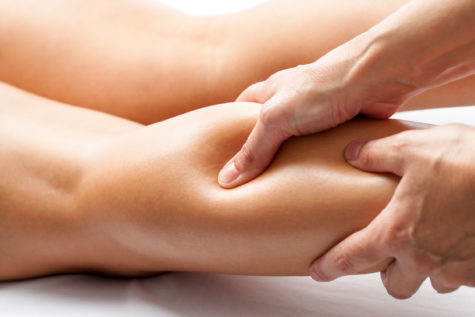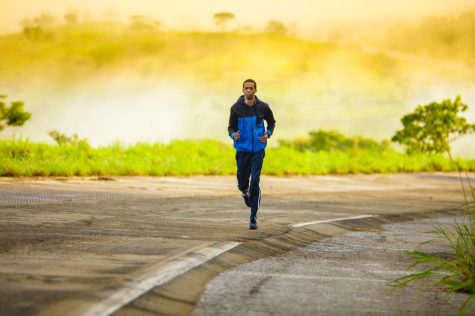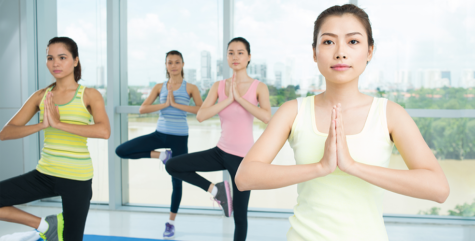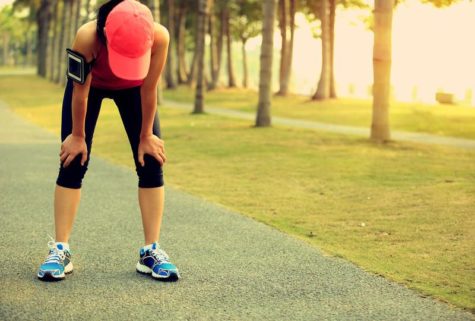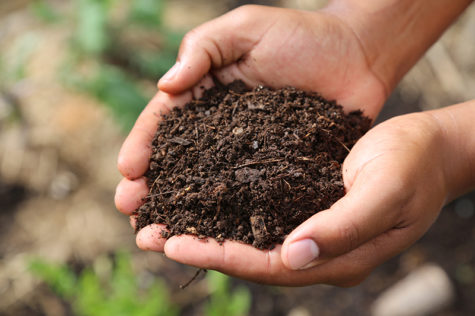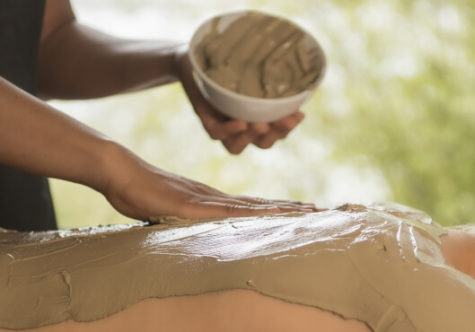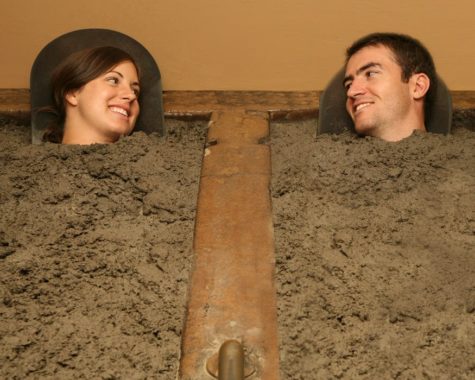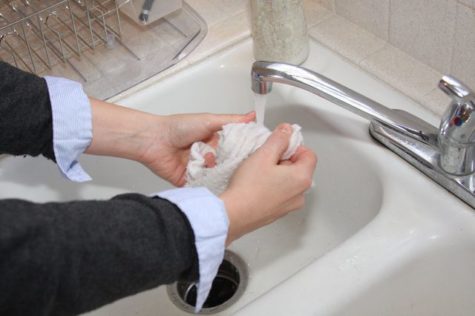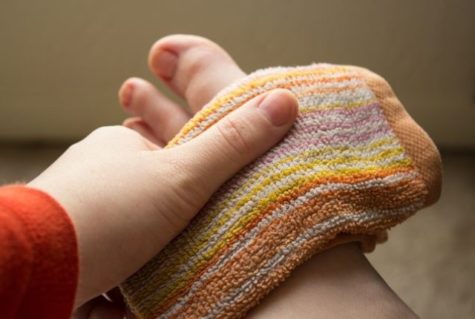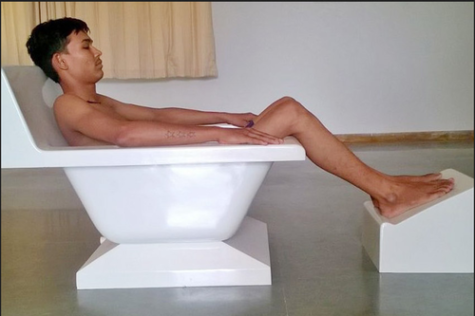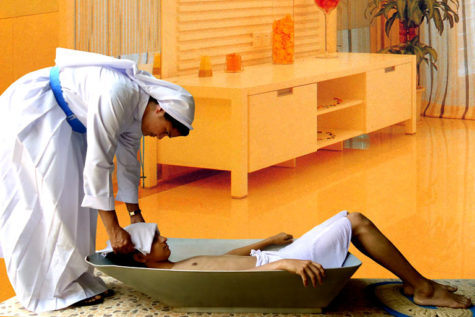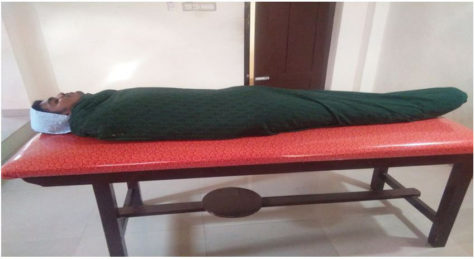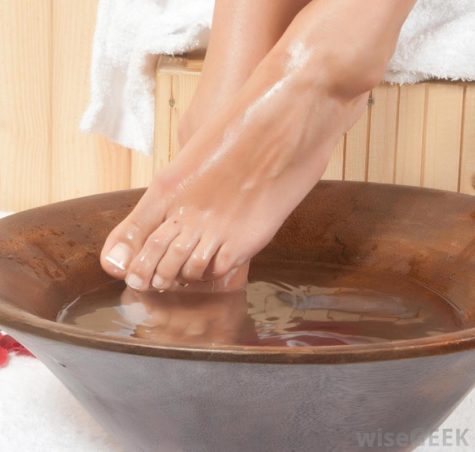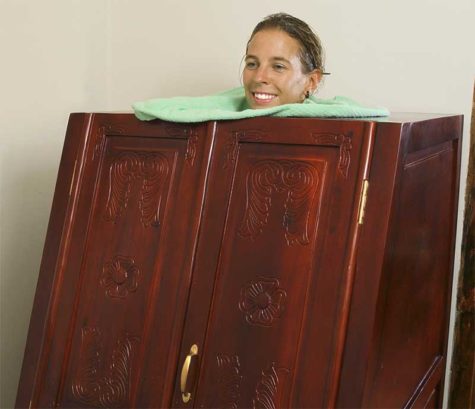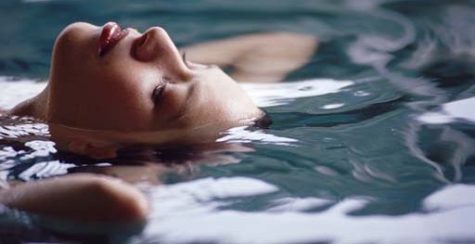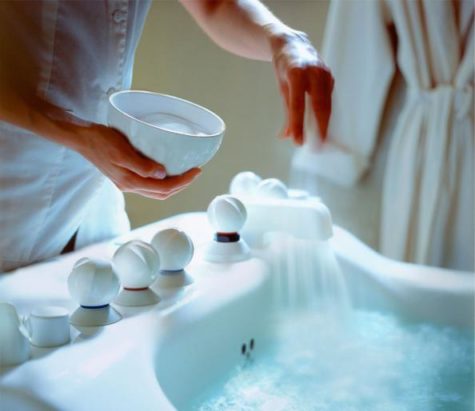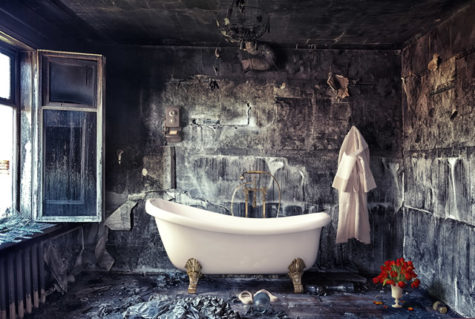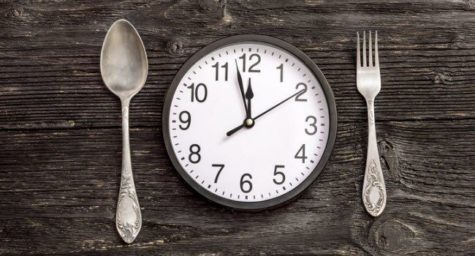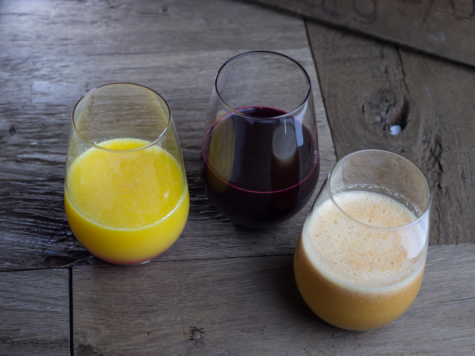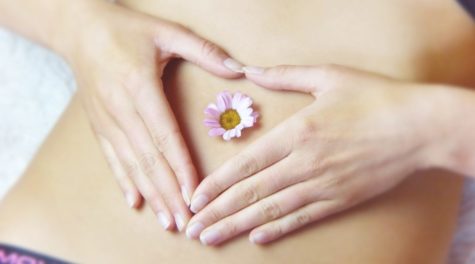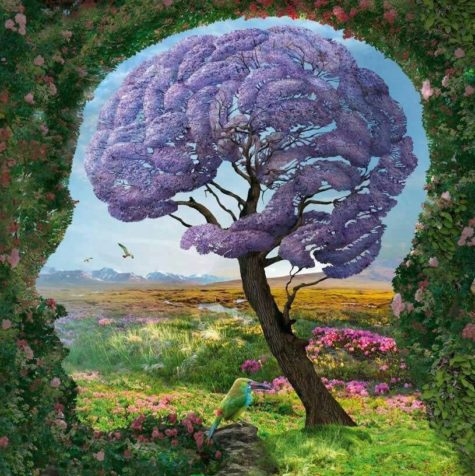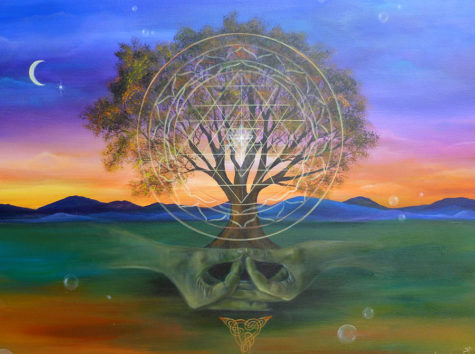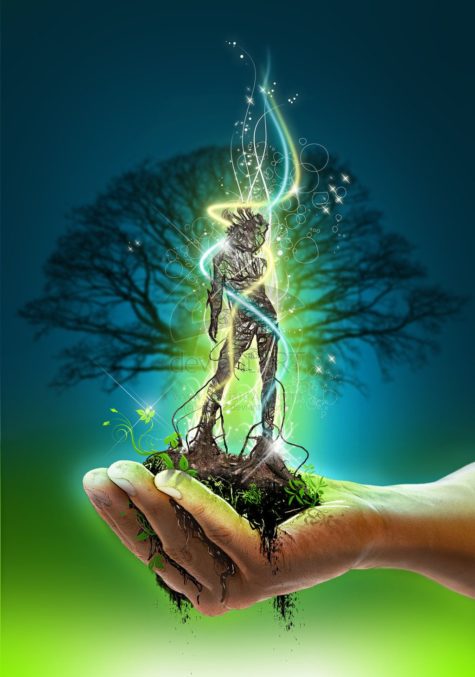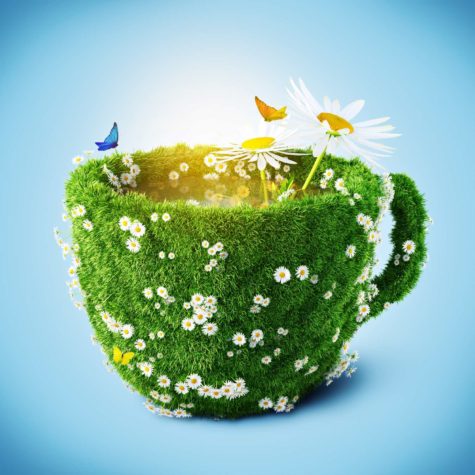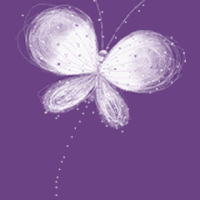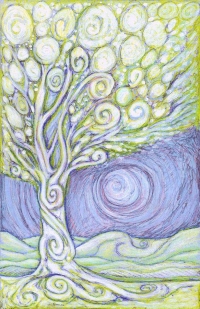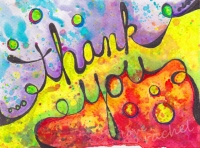Monthly Archives: November 2018
Therapeutic Value of Massage
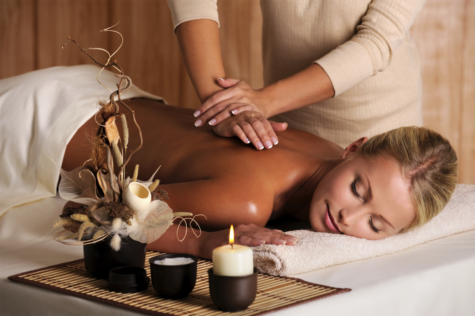
Massage is an excellent form of passive exercise. The word is derived from the Greek word ‘massier’ which means to knead. It involves the scientific manipulation of the soft tissues of the body. If correctly done on a bare body, it can be highly stimulating and invigorating. As far back as 400 B.C. , the great Hippocrates, the father of medicine, employed massage and manipulation in healing his patients. Since then it has been used as a mode of treatment for many ailments and it has restored many a sufferer to health and vigor.
Benefits
The general massage, dealing with all parts of the body, is highly beneficial in many ways. It tones up the nervous system, influences respiration and quickens the elimination of poisons and waste material from the body through the various eliminative organs such as the lungs, skin, kidneys and bowels. It also boosts blood circulation and metabolic processes. A massage removes facial wrinkles , helps to fill out hollow cheeks and neck and eases stiffness, sore muscles and numbness.
Various movements
There are five fundamental modes of manipulation in massage and these are : effleurage (stroking), friction ( rubbing), petrissage ( kneading), tapotment (percussion) and vibration (shaking or trembling).
- Effleurage
This involves sliding with the hands, using long even strokes over the surface of the body. Effleurage is performed in five ways, namely stroking with palms of two hands; the palm of one hand; the knuckles; the ball of the thumb and the finger tips. Effleurage increases blood circulation and soothes the nervous system. It also warms and relaxes. It is very helpful in atrophied condition of the skin.
- Friction
The movements, which are circular in nature are performed with the help of the thumb and tips of fingers or the palm of the hand towards the joints or around the joints. Friction limbers up joints, tendons, and muscles and facilitates the removal of deposits by breaking them. It also helps in reducing swelling after nerve inflammation.
- Petrissage
This is the process of kneading, pressing and rolling of the tissues and is performed with one or both hands, with two thumbs or with thumbs and fingers. One should apply heavy pressure for deep kneading and light pressure for superficial kneading. Petrissage is a treatment of the muscles. It increases nutrition, strengthens muscles, relieves intestinal congestion and helps elimination of the poisons. It boosts long activity and cellular respiration, eliminates fatigue poisons and tones up nerve endings.
- Tapotement
This involves hacking, tapping, clapping and beating and is achieved by striking the body rapidly. Short and quick blows are generally given from the wrist. Tapotement helps in atrophied condition of the muscles. It increases blood supply, soothes nerves and strengthens muscles.
- Vibrations
This is achieved by rapidly shaking the pressing movements by use of the hand or fingers on the body. Vibrating hand should move constantly. This is beneficial in neuritis and neuralgia after the inflammatory stage is over. It stimulates circulation, glandular activity and nervous plexuses. It also helps in bowel movement. Another form of massage helpful in most elements is the vibratory massage. This can be done by trained persons only. The vibratory muscles is more efficiently administered by a special, electrically operated machine.
Material for Massage
Cotton seed oil is most commonly used for massaging, but butter is used for filling out cheeks and the neck and also for breast enlargement. If the patient is averse to oil, talcum powder may be used. Oil should not be used by persons with excessive body hair. General body massage may be done for 40 to 45 minutes and local body massage for 10 to 15 minutes. The oil should be washed off completely after massage.
Therapeutic Uses
Massage can be used with advantage as a method of treatment for many common ailments. The various forms of massage and their usefulness in various diseases are described here in brief.
- Massage of the Joints
Stiff and swollen joints can be cured by massage combined with mechanical movements. Massage is, however, not recommended in serious inflammatory cases of the joints and in tubercular joints. It should also be avoided in infectious diseases like diphtheria and gonorrhea which cause formation of pus as massage may spread the pus to the entire system.
Sprains and bruises can be cured by massage. In these cases, affected parts should first be bathed with hot water for 15 to 30 minutes. Next the massage should be done for a few minutes. Gentle stroking and kneading is recommended on and around the injured tissues.
Fractures can also be treated through massage. This form of massage is of great help in atrophy of the muscles which usually follows if the muscles are not used for any length of time. This condition may also be brought about by injuries, diseases of the joints, inflammation of the muscles and nerves, and by too long use of cats, bandages and splints.
A human being carries one half of the weight of his body in the form of muscular tissues. One fourth of the blood supply circulates in the muscles. When one gets a good massage treatment, the muscles get regenerated and are then capable of holding half of the blood supply. Massage thus provides additional nourishment to feed the muscular tissues, helping them to grow strong. Tapping, striking, and vibrating help the muscle to develop its contractile power.
Muscle massage is brought by first effleurage, kneading, followed by tapotement. Later, active and passive movements are given. Massage is employed for eliminating muscle contraction and for breaking of adhesions. A little moderate kneading, and percussion cause muscles to contract and become stronger. Deep circular kneading and vibration loosens the muscles. Kneading under and round the muscles breaks up adhesions.
- Massaging the nerves
Massage benefits many nerve problems. In case of acute inflammation of the nerves, massage should be done carefully. Light and gentle stroking are recommended. Deep pressure should not be used on swollen nerves for it will increase the inflammation. All that is needed is just a gentle tapotement or beating of the nerve.
Nerve compression is recommended for soothing nerves. Grasp the limb with both hands, and create firm pressure around and down the arm. Start with the shoulder and proceed down to the wrist. As you leave the grip, bring the hands down a little and make another pressure. As a result, blood circulation will increase.
Spinal nerve compression is extremely beneficial. It is done by the palm of the hand. Vibration of the fingers stimulate it. Sleeplessness can be cured by long slow and gentle stroking down the spine and entire back.
- Abdominal Massage
This form of massage is beneficial in constipation. It stimulates the peristalsis of the small intestines, tones up the muscles of the abdomen walls and mechanically eliminates the contents of both large and small intestines. Abdominal massage should not be done in general, femoral, inguinal and umbilical hernia, inflammation of the uterus, bladder, ovaries and Fallopian tubes, kidney stones, bladder or gall bladder, ulcers of the stomach and intestines, and pregnancy.
Abdominal massage should not be done after a heavy meal, but after two hours or so. The bladder should be emptied before the massage. The patient is made to lie on his back with his knees drawn up. This enable the abdomen wall to relax. The masseur should stand at the right side of the patient and use his finger tips for friction round the umbilical region from right to left. He should likewise alternatively knead the walls and roll with both hands, making deep and firm pressure. He should knead with the hand and finger tips and keep clear of any wound or tender places. He should later take up massaging of the larger intestines.
The manipulation of the large intestine should begin on the right side. Keep it going upwards and across the transverse colon and move right down on the left side to the signoid flexure and rectum. Circular kneading should be done with the help of the three middle fingers. At the same time press into the contents of the abdomen, following the course of the larger colon with a crawling motion. Keep kneading by means of a few circular movements in one spot with the help of finger tips. Keep moving the fingers a little further along. Knead repeatedly.
Use knuckles of the hand to make deep pressure along the large colon, moving the hands along after each pressure. Once the kneading of the abdomen is over, follow up by tapotement with both hands cupped or use the knuckles of the hand. Vibration may also be employed. The patient could also be asked to do some gymnastic exercises for strengthening the walls of the abdomen.
Since blood pressure increases during abdominal manipulation, patients with hypertension should avoid abdominal massage. Massage should also be avoided in cases where there has been recent bleeding in the lungs, the stomach or the brain.
- Chest Massage
Chest massage is helpful in many ways. It strengthens the chest muscles, increases circulation and tones up the nervous system of chest, heart and lungs. It is especially recommended in weakness of the lungs,palpitation and organic heart disorders. Bust and mammary glands can be developed by proper massage. The patient is made to lie on the back with the arms at the sides.
The masseur starts manipulating the chest by means of strokes with both hands on each side of the breast bone. A circular motion is formed by the movement made up and down, moving down the chest. Next the muscle kneading is done by picking up the skin and muscles with both hands. Treatment is given to both sides of the chest likewise. Circular kneading is next done by placing one hand on each side of the breast bone and making the circular motion outward towards the side. Tapotement follows by hacking and slapping.
- Massage of Back
The purpose of the massage of the back is to stimulate the nerves and circulation for treating backache, rheumatic afflictions of the back muscles, and for soothing the nervous system. The patient is made to lie down with the arms at the sides. The masseur effleurages the back from the shoulders downwards using both hands on each side of the spine. Stroking is done from the sacrum upward. Friction follows with each hand at the sides of the spine going down slowly.
Next, kneading by muscle picking is done with squeezing. Alternate rapid pushing and pulling movement of the hands sliding down the spine. Circular kneading should also be done. The treatment should end by slapping, hacking and cupping on each side of the spine. Gentle stroking and light kneading of the back is relieving and soothing. Percussion and vibration result into stimulating experience. Vibration of the end of spine benefits the sacral nerves and pelvic organs. It is recommended in constipation, hemorrhoids, weakness and congestion of the bladder and sexual organs.
- Massage of the Throat
This helps to overcome headache, sore throat and catarrh of the throat. The patient is made to throw his head back. The masseur places palms of both hands on sides of neck with thumbs under the chin, and fingers under the ears. A downward stroke is next made towards the chest over the jugular veins. Do not exert heavily on the jugular veins.
Exercise in Health and Disease

A world famous physical educationist, Eugene Sandow, has very aptly said, ” Life is movement, stagnation is death. ” Physical exercise is essential for the maintenance of normal condition of life. Lack of natural exercise is one of the chief causes of weakness and ill-health.
In recent years, the need for exercise has been recognized even in sickness. Physio and occupational therapy are now standard procedures in medicine to restore the use of muscles and nerves that have been injured by disease or by accident. Patients with organic ailments are now advised to stay in bed for the minimum period considered necessary.
Exercise and Activity
For corrective living, it is essential to differentiate between exercise and activity. While both are important as they are involved in vital physical movement, they vary in degree and benefits. Both employ the body in voluntary movement.
Activity uses the body to a limited degree and generally to achieve a specific purpose. Exercise employs the body over the widest possible range of movement for the particular purpose of maintaining or acquiring muscle tone and control with maximum joint flexibility. Activity requires less physical effort and often less conscious effort once the routine has been established. Exercise demands considerable physical effort and is more beneficial as mental concentration is simultaneously employed.
Benefits
Systematic physical exercise has many benefits. The more important benefits are mentioned below: Regular exercise taken properly can achieve the increased use of food by the body, which contributes to health and fitness. The basal metabolic rate and habitual body temperature will slowly rise during several weeks of physical exercise, if the program is not too hard. The healthy person usually has abundant body heat and a warm radiant glow.
- Regular progressive physical exercise can bring about the balance of automatic, or involuntary , nervous system. The tone of the vagus nerve, one of the nerves that control sensation and motion, is strengthened. This accounts for stronger pulse waves, higher metabolism and better circulation.
- Exercise can prevent or reduce gravitational ptosis or sag, as it is commonly called. Ptosis results from uneven flow of blood in the feet, legs and lower abdomen.
- Improved capillary action in the working of muscular and brain tissue results from exercise carried to the point of real endurance. This permits greater blood flow and gives the muscles, including the heart, more resistance to fatigue. Massage, heat and moderate exercise are relatively ineffective in producing additional capillary action as compared with vigorous exercise.
- The full use of the lungs in vigorous exercise can reduce or prevent lung congestion due to lymph accumulation.
- Gas and intra-intestinal accumulations can be reduced by exercise that acts to knead and squeeze or vibrate the intraintestinal mass.
- Better respiratory reserve is developed by persistent exercise. This ensures better breath holding, especially after a standard exercise. With greater respiratory reserves, exercise become easier.
- Improvement in tone and function of veins can be accomplished by repetitiously squeezing and draining the blood out of them and then allowing them to fill.
- Sweating in exercise aids kidneys by helping to eliminate the waste matter from the body.
- Consistent exercise leads to improvement in quality of blood. Studies have shown improved hemoglobin levels, relatively greater alkalinity, improved total protein content and a grater red cell count.
- Systemic exercise promotes physical strength and mental vigor and strengthens will power and self control leading to harmonious development of the whole system.
Exercise promotes longevity Medical researchers at Harvard and Standford Universities who studied the habits and health of 17,000 middle-aged and older men, reported the first scientific evidence that even modest exercise helps prolong life.
Dr. Ralph S. Paffenberger, the visiting professor of epidemiology at the Harvard School of Pubic Health, who is the principal author of the report said, ” We have found a direct relationship between the level of physical activity and the length of life in the college men we have studied. ” He added,” This is the first good evidence that people who are active and fit have a longer life span than those who are not. ”
A strong connection between a hard and a healthy hard has also been convincingly demonstrated in the same study. The study showed that the less active persons ran a three times higher risk of suffering a fatal heart attack than did those who worked the hardest. Review of fatal heart attacks revealed that the less active men were also three times more likely to die unexpectedly and rapidly within an hour after the attack.
A parallel research report from doctors in Dulles also concluded, after a study of the lives and habits of 6,000 men and women, that the physically fit were less likely to develop hypertension. Dr. Steven N. Blair who headed the research group said, ” We followed the physical health and habits of these people for an average of four-and-a-half years and the data showed that the lack of physical fitness leads to hypertension. ”
Exercise increases calorie output. The body fat can be reduced by regular exercise. It is therefore, useful for weight reduction in conjunction with restricted food intake. According to a study by Dr. Peter Wood of Stanford University Medical School, author of “California Diet and Exercise Programme”, very active people eat about 600 more calories daily than their sedentary counterparts but weight about 20 per cent less.
Up to 15 hours after vigorous exercise, the body continues to burn calories at a higher rate than it would have without exercise. Moderate physical exercise has been found to be accompanied by less obesity and lower cholesterol levels. Regular exercise plays an important role in the fight against stress. It provides recreation and mental relaxation besides keeping the body physically and mentally fit. It is nature’s best tranquilizer.
Chronic fatigue caused by poor circulation can be remedied by undertaking some exercise on a daily basis. It helps relieve tension and induces sleep. Moderate physical exercise at the end of a try day can bring a degree of freshness and renewed energy.
Exercise also plays an important role in the treatment of depression. According to Dr. Robert Brown, a clinical associate professor at the University of Virginia School of Medicine, ” Exercise produces chemical and psychological changes that improves your mental health. It changes the levels of hormones in blood and may elevate your beta-endorphins (mood-affecting brain chemicals). Exercise also gives a feeling of accomplishment and thereby reduces the sense of helplessness. ”
Methods of Exercise
Several systems of exercise have been developed over the years, the most popular among them being the Swedish system and yoga asanas, the later having been practiced from ancient times in India. Whichever system you choose to adopt, the exercises should be performed systematically, regularly and under proper guidance. To be really useful, exercise should be taken in such a manner as to bring into action all the muscles of the body in a natural way.
Walking is one such exercise. It is, however, so gentle in character that one must walk several kilometers in a brisk manner to constitute a fair amount of exercise. Other forms of good exercise are swimming, cycling, horse-riding, tennis, etc.
Precautions
Vigorous exercise of any kind should not be taken for an hour and a half after eating, nor immediately before meals. Weak patients and those suffering from serious diseases like cancer, heart trouble, tuberculosis and asthma should not undertake vigorous exercise except under the supervision of a competent physician.
If exercising makes you tired, stop immediately. The purpose of exercise should be to make you feel refreshed and relaxed and not tired. The most important rule about the fitness plan is to start with very light exercise and to increase the effort in gradual and easy stages. The sense of well-being will begin almost immediately. One can start off with a brisk walk for 15 to 20 minutes. A comfortable sense of tiredness should be the aim.
It is valueless and possibly harmful to become exhausted or seriously short of breath. Perhaps, one should aim at activities which need about two-thirds of one’s maximum ability. One way to assess is to count your own pulse rate.
Counting of pulse is quite easy. Feel the pulse on your left wrist with the middle three fingers of your right hand. Press just firmly enough to feel the beat easily. Now count the number of beats in 15 seconds, with the help of a watch with clear second hand and calculate your rate by multiplying by four. At rest heart beats 70 to 80 times a minute. This rate increases during exercise. Really vigorous can produce rates as high as 200 beats per minute or more. Reasonable aim is to exercise at about two-thirds of maximum capacity. It follows that heart rate should be about 130 per minute during and just after exercise. Always avoid over-exertion and never allow your pulse go above 190 per minute minus your age.
The Curative Powers of Earth
Earth was used extensively for remedial purposes in ancient times as well as the middle ages. In modern times, it again came into prominence as a valuable therapeutic agent in the last century through the indefatigable efforts of Emanuel Felke, a German-born Lutheran minister who was nicknamed the “Clay Pastor.” Felke found that the forces of earth have remarkable effects upon the human body, especially during the night. These effects are described as refreshing, invigorating and vitalizing.
Felke believed that for wounds and skin diseases, application of clay or moistened earth was the only true natural bondage. The body is thus repaired with the element from which it is assumed to be made. Adolf Just ( 1838 – 1936) , one of the pioneers of nature cure in modern times, believed that all diseases, but especially the serious nervous troubles of our age, would lose their terrors, if only sleeping or lying on the earth at night became customary in the curing of diseases.
According to him, by sleeping on the ground, ” the entire body is aroused from its lethargy to a new manifestation of vital energy, so that it can now effectively remove old morbid matter and masses of old faces from the intestines, and receive a sensation of new health, new life and new unthought of vigor and strength.
” Going barefooted all day long, except when it is very cold, is also regarded as a valuable step towards achieving good health and true happiness. Men can draw vital energy and strength out of the earth through their feet. Jesus Christ also attached a great deal of importance to the practice of going barefooted. He himself was barefooted and commanded his disciples likewise. It is advisable to go entirely barefooted as often as possible, especially on the bare ground but in rooms with painted floors it is better to wear chappals (leather sandals), since the painted floor affects the body adversely if one walks on it with bare soles.
The American Indians lay great stress on earth treatment. They believe that healing power is strong in leaves and herbs, powerful in the air, but very powerful indeed in the earth. They have a custom to bury sufferers from all kinds of disease in the earth up to their necks, leave them there for some hours, and then remove them. They believe that many of them are cured. Presumably the body draws unto itself the healing minerals and some of the earth’s magnetism.
Mud Packs
Natural medicine practitioners at present are making increasing use of moistened earth in the treatment of diseases. The use of mud packs has been found highly beneficial and effective in the treatment of chronic inflammation caused by internal diseases, bruises, sprains, boils and wounds. This mode of treatment is normally adopted in conjunction with a proper scheme of dietary and other natural therapies.
The advantage of mud treatment is that it is able to retain moisture and coolness for longer periods than cold water packs or compresses. The cold moisture in the mud packs relaxes the pores of the skin, draws the blood into the surface, relieves inner congestion and pain, promotes heat radiation and elimination of morbid matter.
A mud pack is prepared with clay obtained from about ten cms. below the surface of the earth, after ensuring that it does not contain any impurities such as compost or pebbles. The clay is then made into a smooth paste with warm water. This is allowed to cool and then spread on a strip of cloth, the size of which may vary according to requirements. The dimensions of the pack meant for application on the abdomen are generally 20 cms. X 10 cm.X 2.5 cm. for adults.
Mud packs have been found to be a valuable treatment of diseases relating to general weakness or nervous disorders. It can also bring down fever and is beneficial in the treatment of scarlet fever, measles and influenza. The mud pack is prescribed for swellings, eye and ear troubles, gout, rheumatism, stomach troubles, kidney and liver malfunctions, diptheria, neuralgia, sexual disorders, headache, toothache and general aches and pains.
The mud bandage, after being placed on the body, should be covered with flannel or other protective material. The pack is applied for 10 to 30 minutes. As the abdomen is the seat of most diseases, mud pack applied to this part of the body can cure many disorders including all forms of indigestion affecting the stomach and bowels. It is most effective in decreasing the external heat and breaking up the morbid matter. It also aids the inactivity of labor pains and for this purpose, the pack may be renewed every hour or two.
The mud pack is also helpful as an alternate treatment. The area under treatment is first given fomentation for five to 10 minutes until it is well heated. Mud is then applied directly to the skin for five to 15 minutes, depending upon the reaction required. Hot and cold applications are useful in relieving chronic pains, intestinal cramps and lumbago. Alternate application helps to relieve discomfort caused by flatulence and intestinal obstructions. It is also helpful in amoebiasis, colitis, enteritis and other inflammatory conditions of bacterial origin.
Mud Bath
Mud or clay bath is another mode of treatment. It is applied in the same way as packs, but only on a larger scale on the entire body. In this, mud or clay is first ground and sifted to remove all impurities, and then made into a smooth paste mixed with hot water. The paste is then spread on a sheet which in turn is wrapped round the body. One or two blankets are then wrapped over this, depending on the temperature of the room and that of the pack. A mud bath is followed with a cleansing warm water bath and a short cold shower.
The mud bath is found to tone up the skin by increasing the circulation and energizing the skin tissues. Frequent mud baths help to improve the complexion, clear spots and patches on the skin following skin disorders or due to smallpox. It is very beneficial in the treatment of skin diseases like psoriasis, leucoderma and every leprosy. This bath is also valuable in getting relief from rheumatic pain or pain in the joints caused by injuries.
The duration of the bath should be from 30 minutes to one hour. Care should also be taken to avoid the patient catching a chill during the bath. Mud applications also form a vital part of natural beauty treatment.
About Therapeutic Baths
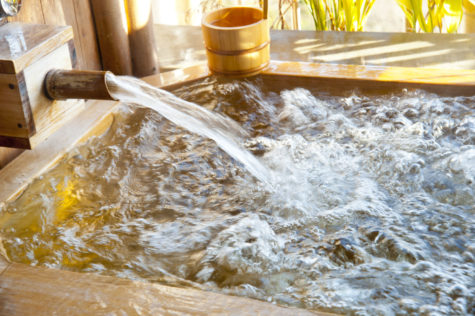
Water has been used as a valuable therapeutic agent since time immemorial. In all major ancient civilizations, bathing was considered an important measure for the maintenance of health and prevention of disease. It was also valued for its remedial properties. The ancient Vedic literature in India contains numerous references to the efficacy of water in the treatment of disease.
In modern times, the therapeutic value of water was popularized by Vincent Priessnitz, Father Sebastian Kneipp, Louis Kuhne and other European water-cure pioneers. They raised water cure to an institutional level and employed it successfully for the treatment of almost every known disease. There are numerous spas and “Bads” in most European countries where therapeutic baths are used as a major healing agent.
Water exerts beneficial effects on the human system. It equalizes circulation, boosts muscular tone and aids digestion and nutrition. It also tones up the activity of perspiratory gland and in the process eliminates the damaged cells and toxic matter from the system.
The common water temperature chart is : cold 100C to 180C, neutral 320C to 360C and hot 400C to 450C. Above 450C, water loses its therapeutic value and is destructive.
The main methods of water treatment which can be employed in the healing of various diseases in a do-it-yourself manner are described below.
Cold Compress
This is a local application using a cloth which has been wrung out in cold water. The cloth should be folded into a broad strip and dipped in cold water or ice water. The compress is generally applied to the head ,neck, chest, abdomen and back.
The cold compress is an effective means of controlling inflammatory conditions of the liver, spleen, stomach, kidneys, intestines, lungs, brain, pelvic organs and so on. It is also advantageous in cases of fever and heart disease. The cold compress soothes dermities and inflammations of external portions of the eye. When the eyeball is affected, the cold compress should follow a short fomentation.
Hot Compress
This is a cold compress covered in such a manner as to bring warmth. A heating compress consists of three or four folds of linen cloth wrung out in cold water which is then covered completely with dry flannel or blanket to prevent the circulation of air and help accumulation of body heat. It is sometimes applied for several hours. The duration of the application is determined by the extent and location of the surface involved, the nature and thickness of the coverings and the water temperature.
After removing the compress, the area should be rubbed with a wet cloth and then dried with a towel. A heating compress can be applied to the throat, chest, abdomen, and joints. A throat compress relieves sore throat, hoarseness, tonsillitis, pharyngitis and laryngitis.
An abdominal compress helps those suffering from gastritis, hyperacidity, indigestion, jaundice, constipation, diarrhea, dysentery and other ailments relating to the abdominal organs. The chest compress also known as chest pack, relieves cold, bronchitis, pleurisy, pneumonia, fever, cough and so on, while the joints compress is helpful for inflamed joints, rheumatism, rheumatic fever and sprains.
Enema
Also known as rectal irrigation, an enema involves the injection of fluid into the rectum. In nature cure treatment, only lukewarm water is used for cleaning the bowels. The patient is made to lie on his left side extending his left leg and bending the right leg slightly. The enema nozzle, lubricated with oil or Vaseline, is inserted in the rectum. The enema can containing the lukewarm water is then slowly raised and water is allowed to enter into the rectum. Generally, one to two liters of water is injected. The patient may either lie down on his back or walk a little while retaining the water. After five to 10 minutes, the water can be ejected along with the accumulated morbid matter.
A warm water enema helps to clean the rectum of accumulated fecal matter. This is not only the safest system for cleaning the bowels, but also improves the peristaltic movement of the bowels and thereby relieves constipation. A cold water enema is helpful in inflammatory conditions of the colon, especially in cases of dysentery, diarrhea, ulcerative colitis, hemorrhoids and fever. A hot water enema is beneficial in relieving irritation due to inflammation of the rectum and painful hemorrhoids. It also benefits women in leucorrhoea.
Hip Baths
The hip bath is one of the most useful forms of hydrotherapy. As the name suggests, this mode of treatment involves only the hips and the abdominal region below the navel. A special type of tub is used for the purpose. The tub is filled with water in such a way that it covers the hips and reaches up to the navel when the patient sits in it. Generally, four to six gallons of water are required. If the special tub is not available, a common tub may be used. A support may be placed under one edge to elevate it by two or three inches. Hip bath is given in cold, hot, neutral or alternate temperatures.
- Cold Hip Bath
The water temperature should be 100C to 180C. The duration of the bath is usually 10 minutes, but in specific conditions it may vary from one minute to 30 minutes. If the patient feels cold or is very weak, a hot foot immersion should be given with the cold hip bath.
The patient should rub the abdomen briskly from the navel downwards and across the body with a moderately coarse wet cloth. The legs, feet and upper part of the body should remain completely dry during and after the bath. The patient should undertake moderate exercise like yoga asanas, after the cold hip bath, to warm the body.
A cold hip bath is a routine treatment in most diseases. It relieves constipation, indigestion, obesity and helps the eliminative organs to function properly. It is also helpful in uterine problems like irregular menstruation, chronic uterine infections, pelvic inflammation, piles, hepatic congestion, chronic congestion of the prostate gland, seminal weakness, impotency, sterility, uterine and ovarian displacements, dilation of the stomach and colon, diarrhea, dysentery, hemorrhage of the bladder and so on. The cold hip bath should not be employed in acute inflammations of the pelvic and abdominal organs, ovaries and in painful contractions of the bladder, rectum or vagina.
- Hot Hip Bath
This bath is generally taken for eight to 10 minutes at a water temperature of 400C to 450C. The bath should start at 400C. The temperature should be gradually increased to 450C. NO friction should be applied to the abdomen. Before entering the tub,the patient should drink one glass of cold water. A cold compress should be placed on the head.
A hot hip bath helps to relieve painful menstruation, pain in the pelvic organs, painful urination, inflamed rectum or bladder and painful piles. It also benefits enlarged prostatic gland, painful contractions or spasm of the bladder, sciatica, neuralgia of the ovaries and bladder. A cold shower bath should be taken immediately after the hot hip bath.
Care should be taken to prevent the patient from catching a chill after the bath. The bath should be terminated if the patient feels giddy or complains of excessive pain.
- Neutral Hip Bath
The temperature of the water should be 320C to 360C. Here too, friction to the abdomen should be avoided. This bath is generally taken for 20 minutes to an hour. The neutral hip bath helps to relieve all acute and sub-acute inflammatory conditions such as acute catarrh of the bladder and urethra and subacute inflammations in the uterus, ovaries and tubes. It also relieves neuralgia of the Fallopian tubes or testicles, painful spasms of the vagina and prorates of the anus and vulva. Besides, it is a sedative treatment for erotomanis in both sexes.
- Alternate Hip Bath
This is also known as revulsive hip bath. The temperature in the hot tub should be 400C to 450C and in the cold tub 100C to 180C. The patient should alternately sit in the hot tub for five minutes and then in the cold tub for three minutes. The duration of the bath is generally 10 to 20 minutes. The head and neck should be kept cold with a cold compress. The treatment should end with a dash of cold water to the hips.
This bath relieves chronic inflammatory conditions of the pelvic viscera such as salpingitis, ovaritis, cellulitis and various neuralgias of the genito-urinary organs, sciatica and lumbago.
Spinal Bath
The spinal bath is another important form of hydrotherapic treatment. This bath provides a soothing effect to the spinal column and thereby influences the central nervous system. It is given in a specially designed tub with its back raised so as to provide proper support to the head. The bath can be administered at cold, neutral and hot temperatures. The water level in the tub should be an inch and a half to two inches and the patient should lie in it for three to 10 minutes.
The cold spinal bath relieves irritation, fatigue, hypertension and excitement. It is beneficial in almost all nervous disorders such as hysteria, fits, mental disorders, loss of memory and tension. The neutral spinal bath is a soothing and sedative treatment, especially for the highly strung and irritable patient. It is the ideal treatment for insomnia and also relieves tension of the vertebral column. The duration of this bath is 20 to 30 minutes.
The hot spinal bath, on the other hand, helps to stimulate the nervous, especially when they are in a depressed state. It also relieves vertebral pain in spondylitis and muscular backache. It relieves sciatic pain and gastrointestinal disturbances of gastric origin.
Full Wet Sheet Pack
This is a procedure in which the whole body is wrapped in a wet sheet, which in turn is wrapped in a dry blanket for regulating evaporation. The blanket should be spread on the bed with its edges hanging over the edge of the bed. The upper end should be about eight inches from the head of the bed. Then spread a linen sheet wrung out in cold water over the blanket so that its end is slightly below the upper end of the blanket.
The patient should lie on the bed sheet with his shoulders about three inches below the upper age. The wet sheet should be weekly wrapped round the body of the patient, drawn in, tightly tucked between the legs and also between the body and the arms. The sheet should be folded over the shoulders and across the neck. Now the blanket should be drawn tightly around the body and tucked in along the side in a similar manner, pulling it tightly. The ends should be doubled up at the feet.
A turkish towel should be placed below the chin to protect the face and neck from coming into contact with the blanket and to exclude outside air more effectively. The head should be covered with a wet cloth so that the scalp remains cold. The feet should be kept warm during the entire treatment. If the patient’s feet are cold, place hot water bottles near them to hasten reaction. The pack is administered for half an hour to one hour till the patient begins to perspire profusely. He may be given cold or hot water to drink.
This pack is useful in cases of fever especially in typhoid and continued fevers, and benefits those suffering from insomnia, epilepsy and infantile convulsions. It is useful in relieving chronic cold and bronchitis and helps in the treatment of rheumatism and obesity.
Foot Baths
- Hot Foot Bath
In this method, the patient should keep his or her legs in a tub or bucket filled with hot water at a temperature of 400C to 450C. Before taking this bath, a glass of water should be taken and the body should be covered with a blanket so that no heat or vapour escapes from the foot bath. The head should be protected with a cold compress. The duration of the bath is generally from 5 to 20 minutes. The patient should take a cold shower immediately after the bath.
The hot foot bath stimulates the involuntary muscles of the uterus, intestines, bladder and other pelvic and abdominal organs. It also relieves sprains and ankle joint pains, headaches caused by cerebral congestion and colds. In women, it helps restore menstruation , if suspended, by increasing supply of blood especially to the uterus and ovaries.
- Cold Foot Bath
Three to four inches of cold water at a temperature of 7.20C to 12.70C should be placed in a small tub or bucket. The feet should be completely immersed in the water for one to five minutes. Friction should be continuously applied to the feet during the bath, either by an attendant or by the patient by rubbing one foot against the other.
A cold foot bath, taken for one or two minutes,relieves cerebral congestion and uterine hemorrhage. It also helps in the treatment of sprains, strains and inflamed bunions when taken for longer periods. It should not be taken in cases of inflammatory conditions of the genito-urinary organs, liver and kidneys.
Steam Bath
Steam bath is one of the most important time-tested water treatments which induces perspiration in a most natural way. The patient, clad in minimum loin cloth or underwear, is made to sit on a stool inside a specially designed cabinet. Before entering the cabinet, the patient should drink one or two glasses of cold water and protect the head with a cold towel. The duration of the steam bath is generally 10 to 20 minutes or until perspiration takes place. A cold shower should be taken immediately after the bath.
Very weak patients, pregnant women, cardiac patients and those suffering from high blood pressure should avoid this bath. If the patient feels giddy or uneasy during the steam bath, he or she should be immediately taken out and given a glass of cold water and the face washed with cold water.
The steam bath helps to eliminate morbid matter from the surface of the skin. It also improves circulation of the blood and tissue activity. It relieves rheumatism, gout, uric acid problems, and obesity. The steam bath is helpful in all forms of chronic toxemia. It also relieves neuralgia, chronic nephritis, infections, tetanus and migraine.
Immersion Baths
This is also known as full bath. It is administered in a bath tub which should be properly fitted with hot and cold water connections. The bath can be taken at cold, neutral, hot, graduated and alternate temperatures.
- Cold Immersion Bath
This may be taken for four seconds to 20 minutes at a temperature ranging from 100C to 23.80C. Before entering the bath, cold water should be poured on the patient’s head, chest and neck and the head should be protected with a cold moist towel. During the bath, the patient should vigorously rub his or her body. After the bath the body should be quickly dried and wrapped up in a blanket. If the climate is favourable, moderate exercise should be undertaken.
This bath helps to bring down fever. It also improves the skin when taken for five to 15 seconds after a prolonged hot bath, by exhilarating circulation and stimulating the nervous system.
This bath should not be given to young children or very elderly persons, nor be taken in cases of acute inflammation of some internal organs such as acute peritonitis, gastritis, enteritis and inflammatory conditions of uterus and ovaries.
- Graduated Bath
The patient should enter the bath at a temperature of 310C. The water temperature should be lowered gradually at the rate of 10C per minute until it reaches 250C. The bath should continue until the patient starts shivering. The graduated bath is intended to avoid nervous shock by sudden plunge into the cold water. This bath is often administered every three hours in cases of fever.
It effectively brings down the temperature except in malarial fever. Besides, it also produces a general tonic effect, increases vital resistances and energizes the heart.
- Neutral Immersion Bath
This bath can be given from 15 to 60 minutes at a temperature ranging from 260C to 280C. It can be given for long duration, without any ill-effects, as the water temperature is akin to the body temperature. The neutral bath diminishes the pulse rate without modifying respiration.
This treatment is the best sedative. Since the neutral bath excites activity of both the skin and the kidneys, it is recommended in cases relating to these organs. It is also beneficial for cases of organic diseases of the brain and spinal cord, including chronic inflammatory conditions such as meningitis, rheumatism and arthritis.
A neutral immersion bath taken for 30 to 60 minutes is highly beneficial in general dropsy, due to cardiac or renal diseases. It also helps those suffering from multiple neuritis, alcoholism and other narcotic habits, chronic diarrhea, peritonitis and chronic affections of the abdomen. In such cases the bath may be given daily for 15 to 30 minutes. This bath is also useful in the toxemic conditions caused by dyspepsia and pruritus. The neutral bath should not be prescribed in certain cases of eczema and other forms of skin diseases where water aggravates the symptoms, nor in cases of extreme cardiac weakness.
- Hot Immersion Bath
This bath can be taken from two to 15 minutes at a temperature from 36.60C to 400C. Generally this bath is started at 370C and the temperature is then gradually raised to the required level by adding hot water. Before entering the bath, the patient should drink cold water and also wet the head, neck and shoulders with cold water. A cold compress should be applied throughout the treatment.
This bath can be advantageously employed in dropsy when there is excessive loss of tone of the heart and blood. This bath also relieves capillary bronchitis and bronchial pneumonia in children. It relieves congestion of the lungs and activates the blood vessels of the skin muscles. The bath should be terminated as soon as the skin becomes red.
In pneumonia and suppressed menstruation, the bath should be administered at 37.70C to 400C for about 30 to 45 minutes. This bath should be given when the menstruation is due and may be repeated for two to three days in succession. In dysmenorrhoea, this bath should be given at 380C to 44.40C for 15 minutes.
In chronic bronchitis a very hot bath taken for 5 to 7 minutes should be accompanied with rubbing and friction. This relieves congestion of the mucous membrane and provides immediate relief After the bath, oil should be applied to the skin if necessary.
The hot bath is a valuable treatment in chronic rheumatism and obesity. It gives immediate relief when there is pain due to stones in the gall bladder and the kidneys. The hot bath should not be taken in cases of organic diseases of the brain or spinal cord, nor in cases of cardiac weakness and cardiac hypertrophy.
Epsom Salt Bath
The immersion bath tub should be filled with about 135 litres of hot water at 400C. One to 1 1/2 kg. of Epsom salt should be dissolved in this water. The patient should drink a glass of cold water, cover the head with a cold towel and then lie down in the tub, completely immersing the trunk, thighs and legs for 15 to 20 minutes. The best time to take this bath is just before retiring to bed. This is useful in cases of sciatica, lumbago, rheumatism, diabetes, neuritis, cold and catarrh, kidney disorders and other uric acid and skin affections.
Precautions
Certain precautions are necessary while taking these therapeutic baths. Full baths should be avoided within three hours after a meal and one hour before it. Local baths like the hip bath and foot bath may, however, be taken two hours after a meal. Clean and pure water must be used for baths and water once used should not be used again.
While taking baths, temperature and duration should be strictly observed to obtain the desired effects. A thermometer should always be used to measure the temperature of the body. Women should not take any of the baths during menstruation. They can take only hip baths during pregnancy till the completion of the third month.
Fasting – The Master Remedy
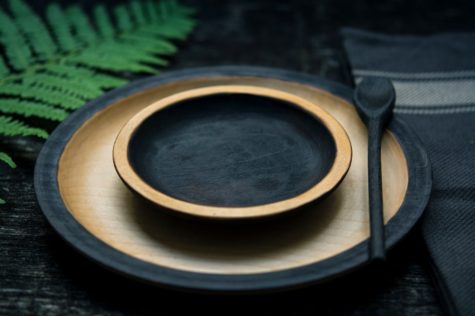
Fasting refers to complete abstinence from food for a short or long period for a specific purpose. The word is derived from the old English, ‘feastan’ which means to fast, observe, be strict. Fasting is nature’s oldest, most effective and yet least expensive method of treating disease. It is recognized as the cornerstone of natural healing. Dr. Arnold Eheret, the originator of the mucus-less diet healing system, describes it as ” nature’s only universal and omnipotent remedy of healing” and “nature’s only fundamental law of all healing and curing. ”
The practice of fasting is one of the most ancient customs. It is followed in almost every religion. The Mohammedan, the Buddhists, the Hindus and many others have their periods of strict fasting. The saints of medieval times laid great stress on this method.
Fasting in disease was advocated by the school of natural philosopher, Asclepiades, more than two thousand years ago. Throughout medical history, it has been regarded as one of the most dependable curative methods. Hippocrates, Galen, Paracelsus and many other great authorities on medicine prescribed it. Many noted modern physicians have successfully employed this system of healing in the treatment of numerous diseases.
The common cause of all diseases is the accumulation of waste and poisonous matter in the body which results from overeating. The majority of persons eat too much and follow sedentary occupations which do not permit sufficient and proper exercise for utilization of this large quantity of food. This surplus overburdens the digestive and assimilative organs and clogs up the system with impurities or poisons. Digestion and elimination become slow and the functional activity of the whole system gets deranged.
The onset of disease is merely the process of ridding the system of these impurities. Every disease can be healed by only one remedy – by doing just the opposite of what causes it, that is, by reducing the food intake or fasting.
By depriving the body of food for a time ,the organs of elimination such as the bowels, kidneys, skin and lungs are given opportunity to expel, unhampered, the overload of accumulated waste from the system. Thus, fasting is merely the process of purification and an effective and quick method of cure. It assists nature in her continuous effort to expel foreign matter and disease producing waste from the body, thereby correcting the faults of improper diet and wrong living. It also leads to regeneration of the blood as well as the repair and regeneration of the various tissues of the body.
Duration
The duration of the fast depends upon the age of the patient, the nature of the disease and the amount and type of drugs previously used. The duration is important, because long periods of fasting can be dangerous if undertaken without competent professional guidance. It is, therefore, advisable to undertake a series of short fasts of two to three days and gradually increase the duration of each succeeding fast by a day or so.
The period, however, should not exceed a week of total fasting at a time. This will enable the chronically sick body to gradually and slowly eliminate toxic waste matter without seriously affecting the natural functioning of the body. A correct mode of living and a balanced diet after the fast will restore vigor and vitality to the individual.
Fasting is highly beneficial in practically all kinds of stomach and intestinal disorders and in serious conditions of the kidneys and liver. It is a miracle cure for eczema and other skin diseases and offers the only hope of permanent cure in many cases. The various nervous disorders also respond favorably to this mode of treatment.
Fasting should, however, not be restored to in every illness. In cases of diabetes, advanced stages of tuberculosis, and extreme cases of neurasthenia, long fasts will be harmful. IN most cases, however , no harm will accrue to fasting patients, provided they take rest, and are under proper professional care.
Fasting – Methods
The best, safest and most effective method of fasting is juice fasting. Although the old classic form of fasting was a pure water fast, most of the leading authorities on fasting today agree that juice fasting is far superior to a water fast.
According to Dr. Rangar Berg, the world -famous authority on nutrition, “During fasting the body burns up and excretes huge amounts of accumulated wastes. We can help this cleansing process by drinking alkaline juice instead of water while fasting … Elimination of uric acid and other inorganic acids will be accelerated. And sugars in juices will strengthen the heart … juice fasting is, therefore, the best form of fasting. ”
Vitamins, minerals, enzymes and trace elements in fresh, raw vegetable and fruit juices are extremely beneficial in normalizing all the body processes. They supply essential elements for the body’s own healing activity and cell regeneration and thus speeding the recovery. All juices should be prepared from fresh fruit immediately before drinking. Canned or frozen juices should not be used.
A precautionary measure which must be observed in all cases of fasting is the complete emptying of the bowels at the beginning of the fast by enema so that the patient is not bothered by gas or decomposing matter formed from the excrement remaining in the body. Enemas should be administered at least every alternate day during the fasting period. The patient should get as much fresh air as possible and should drink plain lukewarm water when thirsty. Fresh juices may be diluted with pure water. The total liquid intake should be approximately six to eight glasses.
A lot of energy is spent during the fast in the process of eliminating accumulated poisons and toxic waste materials. It is, therefore, of utmost importance that the patients gets as much physical rest and mental relaxation as possible during the fast. In cases of fasts in which fruit juices are taken, especially when fresh grapes, oranges or grapefruit are used exclusively, the toxic wastes enter the blood -stream rapidly, resulting in an overload of toxic matter, which affects normal bodily functions. This often results in dizzy spells, followed by diarrhea and vomiting. If this physical reaction persists, it is advisable to discontinue the fast and take cooked vegetables containing adequate roughage such as spinach and beets until the body functioning returns to normal.
The overweight person finds it much easier to go without food. Loss of weight causes no fear and the patient’s attitude makes fasting almost a pleasure. The first day’s hunger pangs are perhaps the most difficult to bear. The craving for food will, however, gradually decrease as the fast progresses. Seriously sick persons have no desire for food and fasting comes naturally to them. The simplest rule is to stop eating until the appetite returns or until one feels completely well.
Only very simple exercises like short walks may be undertaken during the fast. A warm water or neutral bath may be taken during the period. Cold baths are not advisable. Sun and air baths should be taken daily. Fasting sometimes produces a state of sleeplessness which can be overcome by a warm tub bath, hot water bottles at the feet and by drinking one or two glasses of hot water.
Benefits
There are several benefit of fasting. During a long fast, the body feeds upon its reserves. Being deprived of needed nutrients, particularly of protein and fats, it will burn and digest its own tissues by the process of autolysis or self-digestion. But it will not do so indiscriminately. The body will first decompose and burn those cells and tissues which are diseased, damaged, aged or dead. The essential tissues and vital organs, the glands, the nervous system and the brain are not damaged or digested in fasting.
Here lies the secret of the effectiveness of fasting as a curative and rejuvenative method. During fasting, the building of new and healthy cells are sped up by the amino acids released from the diseased cells. The capacity of the eliminative organs, that is, lungs, liver, kidneys and the skin is greatly increased as they are relieved of the usual burden of digesting food and eliminating the resultant wastes. They are, therefore, able to quickly expel old accumulated wastes and toxins.
Fasting affords a physiological rest to the digestive, assimilative and protective organs. As a result, the digestion of food and the utilization of nutrients is greatly improved after fasting. The fast also exerts a normalizing, stabilizing and rejuvenating effect on all the vital physiological, nervous and mental functions.
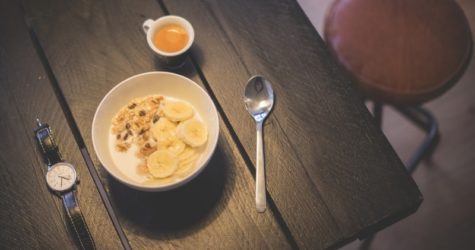
Breaking the Fast
The success of the fast depends largely on how it is broken. This is the most significant phase. The main rules for breaking the fast are: do not overeat, eat slowly and chew your food thoroughly; and take several days for the gradual change to the normal diet. If the transition to eating solid foods is carefully planned, there will be no discomfort or damage. The patient should also continue to take rest during the transition period. The right food after a fast is as important and decisive for proper results as the fast itself.
About Naturopathic Medicine
Nature Cures, not the Physician.
– Hippocrates
Principles and Practice
Natural medicine, or naturopathy, is a constructive method of treatment which aims at removing the basic cause of disease through the rational use of the elements freely available in nature. It is not only a system of healing, but also a way of life, in tune with the internal vital forces or natural elements comprising the human body. It is a complete revolution in the art and science of living.
Although the term ‘ naturopathy’ is of relatively recent origin, the philosophical basis and several of the methods of nature cure treatments are ancient. It was practiced in ancient Egypt, Greece and Rome. Hippocrates, the father of medicine ( 460-357 B.C.) strongly advocated it. India, it appears, was much further advanced in older days in natural healing system than other countries of the world. There are references in India’s ancient sacred books about the extensive use of nature’s excellent healing agents such as air, earth, water and sun. The Great Baths of the Indus Valley civilization as discovered at Mohenjodaro in old Sind testifies to the use of water for curative purposes in ancient India.
The modern methods of natural healing originated in Germany in 1822, when Vincent Priessnitz established the first hydropathic establishment there. With his great success in water cure, the idea of drugless healing spread throughout the civilized world and many medical practitioners throughout the civilized world and many medical practitioners from America and other countries became his enthusiastic students and disciples. These students subsequently enlarged and developed the various methods of natural healing in their own way. The whole mass of knowledge was later collected under one name, Naturopathy. The credit for the name Naturopathy goes to Dr. Benedict Lust ( 1872 – 1945), and hence he is called the Father of Naturopathy.
Natural medicine is based on the realization that man is born healthy and strong and that he can stay as such as living in accordance with the laws of nature. Even if born with some inherited affliction, the individual can eliminate it by putting to the best use the natural agents of healing. Fresh air, sunshine, a proper diet, exercise, scientific relaxation, constructive thinking and the right mental attitude, along with prayer and meditation all play their part in keeping a sound mind in a sound body.
Natural medicine believes that disease is an abnormal condition of the body resulting from the violation of the natural laws. Every such violation has repercussions on the human system in the shape of lowered vitality, irregularities of the blood and lymph and the accumulation of waste matter and toxins. Thus, through a faulty diet it is not the digestive system alone which is adversely affected. When toxins accumulate, other organs such as the bowels, kidneys, skin and lungs are overworked and cannot get rid of these harmful substances as quickly as they are produced.
Besides this, mental and emotional disturbances cause imbalances of the vital electric field within which cell metabolism takes place, producing toxins. When the soil of this electric filed is undisturbed, disease-causing germs can live in it without multiplying or producing toxins. It is only when it is disturbed or when the blood is polluted with toxic waste that the germs multiply and become harmful.
Basic Principles
The whole philosophy and practice of natural medicine is built on three basic principles. These principles are based on the conclusions reached from over a century of effective naturopathic treatment of diseases in Germany, America and Great Britain. They have been tested and proved over and over again by the results obtained.
The first and most basic principle of natural medicine is that all forms of disease are due to the same cause, namely, the accumulations of waste materials and bodily refuse in the system. These waste materials in the healthy individual are removed from the system through the organs of elimination. But in the diseased person, they are steadily piling up in the body through years of faulty habits of living such as wrong feeding, improper care of the body and habits contributing to enervation and nervous exhaustion such as worry, overwork and excesses of all kinds. It follows from this basic principle that the only way to cure disease is to employ methods which will enable the system to throw off these toxic accumulations. All natural treatments are actually directed towards this end.
The second basic principle of natural medicine is that all acute diseases such as fevers, colds, inflammations, digestive disturbances and skin eruptions are nothing more than self-initiated efforts on the part of the body to throw off the accumulated waste materials and that all chronic diseases such as heart disease, diabetes, rheumatism, asthma, kidney disorders, are the results of continued suppression of the acute diseases through harmful methods such as drugs, vaccines, narcotics and gland extracts.
The third principle of natural medicine is that the body contains an elaborate healing mechanism which has the power to bring about a return to normal condition of health, provided right methods are employed to enable it to do so. In other words, the power to cure disease lies within the body itself and not in the hands of the doctor.
Nature Cure vs Modern System
The modern medical system treats the symptoms and suppresses the disease but does little to ascertain the real cause. Toxic drugs which may suppress or relieve some ailments usually have harmful side-effects. Drugs usually hinder the self-healing efforts of the body and make recovery more difficult.
According to the late Sir William Osler, an eminent physician and surgeon, when drugs are used, the patient has to recover twice – once from the illness, and once from the drug. Drugs cannot cure diseases; disease continues. It is only its pattern that changes. Drugs also produce dietary deficiencies by destroying nutrients, using them up, and preventing their absorption. Moreover, the toxicity they produce occurs at a time when the body is least capable of coping with it. The power to restore health thus lies not in drugs, but in nature.
The approach of modern system is more on combative lines after the disease has set in, whereas the naturopathic system lays greater emphasis on preventive method and adopts measures to attain and maintain health and prevent disease. The modern medical system treats each disease as a separate entity, requiring specific drug for its cure, whereas the naturopathic system treats the organism as a whole and seeks to restore harmony to the whole of the patient’s being.
Methods of Naturopathy
Natural medicine aims at the readjustment of the human system from abnormal to normal conditions and functions, and adopts methods of cure which are in conformity with the constructive principles of nature. Such methods remove from the system the accumulation of toxic matter and poisons without in any way injuring the vital organs of the body. They also stimulate the organs of elimination and purification to better functioning.
To cure disease, the first and foremost requirement is to regulate the diet. To get rid of accumulated toxins and restore the equilibrium of the system, it is desirable to completely exclude acid-forming foods, including proteins, starches and fats, for a week or more and to confine the diet to fresh fruits which will disinfect the stomach and alimentary canal. If the body is overloaded with morbid matter, as in acute disease, a complete fast for a few days may be necessary for the elimination of toxins. Fruit juice may, however, be taken during a fast.
- A simple rule:
Do not eat when you are sick, stick to a light diet of fresh fruits. Wait for the return of the usual healthy appetite. Loss of appetite is Nature’s warning that no burden should be placed on the digestive organs. Alkaline foods such as raw vegetables and sprouted whole grain cereals may be added after a week of a fruits-only diet.
Another important factor in the cure of diseases by natural methods is to stimulate the vitality of the body. This can be achieved by using water in various ways and at varying temperatures in the form of packs or baths. The application of cold water, especially to the abdomen, the seat of most diseases, and to the sexual organs, through a cold sitting ( hip) bath immediately lowers body heat and stimulates the nervous system. In the form of wet packs, hydrotherapy offers a simple natural method of abating fevers and reducing pain and inflammation without any harmful side-effects. Warm water applications, on the other hand, are relaxing.
Other natural methods useful in the cure of diseases are air and sunbaths, exercise and massage. Air and sunbaths revive dead skin and help maintain it in a normal condition. Exercise, especially yogic asanas, promotes inner health and harmony and helps eliminate all tension: physical, mental and emotional. Massage tones up the nervous system and quickens blood circulation and the metabolic process.
Thus a well-balanced diet, sufficient physical exercise, the observation of the other laws of well-being such as fresh air, plenty of sunlight, pure drinking water, scrupulous cleanliness, adequate rest and right mental attitude can ensure proper health and prevent disease.
